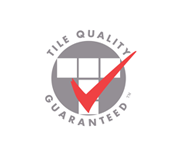What are AS/NZS4586 & AS/NZS3661.1?
AS/NZS 4586 is the slip resistance standard in use in Australia. AS/NZS 3661.1 is an earlier version of the slip resistance standard, but is the version still referenced under the NZ Building Code in D1/AS1 of the D1 Compliance Document.
Can I use 4586 test results?
Yes. Both 4586 & 3661 use the same pendulum method of testing the slipperiness of the floor, so any tile tested using the wet pendulum method under 4586 can be translated into the 3661 standard.
4586 has two alternative tests using the ramp method of assessing the slip rating - these tests give a "R" rating (R9, R10 etc). In some circumstances these ramp tests may be more suitable, for example the "wet barefoot" test may be more applicable in swimming pool areas. The ramp method of testing is not recognized under AS/NZS 3661.1 or the NZ Building Code, but could be applied to be used as an Alternative Solution. In most cases it is best to request a NZ slip test be performed on any flooring you are considering using.
Where do I need to specify slip resistant surfaces?
Acceptable Solution D1/AS1 states that adequate slip resistance is required on all public access routes, including access into and within buildings.
Adequate slip resistance: defined as meeting a co-efficient of friction of not less than 0.4 when tested in accordance with AS/NZS 3661.1. When a surface will remain dry under normal usage, almost all surfaces will provide adequate slip resistance and do not need to be tested. D1/AS1 lists these surfaces as having an acceptable dry slip resistance: timber, cement, concrete, marble, granite, slate, terrazzo, sandstone, ceramic tile, clay pavers, concrete pavers, fibre cement sheet, rubber tiles, vinyl, linoleum, carpet and timber composite. When a surface may get wet under normal circumstances, it should be tested under AS/NZS 3661.1 to prove its suitability.
Residential: 'public access route' is defined as the pathway to the front door. As this access route would usually get wet under normal circumstances, a tile that passes 0.4 when wet is required. For single dwellings decks, pool areas, bathrooms and laundries are not public areas and therefore are not required to be slip resistant. In multi-dwellings some areas (eg pools, laundries, communal courtyards) may be considered public areas and therefore will need to be slip-resistant.
Commercial:
- 'Access within buildings' is considered to be the public access between private areas of the building, eg. corridors and bathrooms. Both of these spaces would remain dry under normal use.
- 'Access into buildings' can often become wet during normal use, so require a surface that will pass 0.4 when wet.
D1/AS1 also provides a guide for the transition zone between 'wet under normal usage' and 'dry under normal usage'. This zone can use either water absorbent matting for an area sufficient to absorb most water from shoes (suggested as minimum 1.8 metres), or an extended area of the wet slip resistant surface (suggested to be 6-10m from where the ground gets wet from rain).
Slip Resistance in Commercial Kitchens
There is much confusion around what sort of flooring surface a commercial kitchen requires. Does it need to be non-slip? Or does it need to be smooth for easy cleaning? Our recommendation is a balance of the two.
Slip Resistance in Commercial Bathrooms
Commercial bathrooms are not considered to be a wet area, so do not require a slip resistant tile. We recommend using either a textured tile, or a smooth tile. Both of these are easy to clean (which is most important in a bathroom). The only application where a slip resistant tile is definitely required is when the bathroom becomes a wet room with the addition of showers. We would recommend a slip resistant tile be used in the shower area, with a matching smooth tile used outside of the shower space.
What is Accelerated Wear testing?
Accelerated Wear is a method of testing tiles to project their non-slip properties into the future. It uses cycles of scouring across a surface to replicate foot traffic, and then re-tests slip resistance at 500, 1000 and 5000 cycles. It is not compulsory under the NZ Building Code, but as many non-slip tiles decrease in slip resistance dramatically after installation Accelerated Wear testing prior to specification provides assurance that the surface will maintain its non-slip properties.
What are Sustainable Slip Resistant tiles?
These are tiles that initially pass the co-efficient 0.4 slip requirement and go on to maintain their slip resistance over a period of time. Tiles that sustain their slip resistance over the longest period are typically specifically manufactured with this objective. It is impossible to predict how long slip resistance will be maintained for, as this depends on location-specific factors such as cleaning methods and foot traffic. Slip resistance experts Safe Environments (Australia) recommend a surface achieve a minimum BPN of 35 after wear (either in-situ or accelerated) to be classified as effectively slip resistant.
BPN is the test result reported from pendulum testing under AS/NZS4586. It can be converted with a formula into the co-efficient figure required under AS/NZS3661.












